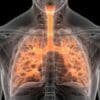Unlocking the Mystery: Causes and Risks of Lung Fibrosis
Understanding Lung Fibrosis: The Silent Saboteur
Lung fibrosis, also known as pulmonary fibrosis, is a condition that scars and stiffens the lungs, disrupting the oxygen supply to the bloodstream. This chronic disease can lead to severe breathing difficulties over time. Let’s dive into the causes and risk factors associated with this condition, especially relevant in the Indian context.
Causes of Lung Fibrosis
1. Environmental & Occupational Exposure: Long-term exposure to certain environmental pollutants such as silica dust, asbestos fibers, and coal dust can lead to lung fibrosis. Occupational hazards in industries like mining, construction, and agriculture significantly contribute to this risk.
2. Chronic Inflammatory Diseases: Conditions such as rheumatoid arthritis, sarcoidosis, and systemic sclerosis can be underlying causes that lead to the development of lung fibrosis.
3. Medications: Some medications, like certain chemotherapy drugs, heart medications, and antibiotics, can induce lung fibrosis as a side effect. It’s vital to discuss these risks with healthcare providers, especially if you are on long-term medication.
4. Radiation Therapy: Individuals who have undergone radiation therapy for chest or lung cancer may develop lung fibrosis over time as a complication.
5. Genetic Factors: Family history plays a part as certain genetic mutations can increase the likelihood of developing lung fibrosis.
6. Infections: Repeated lung infections can cause chronic inflammation, which may eventually lead to fibrosis.
Risk Factors
1. Smoking: Smoking is a major risk factor, exacerbating the effects of other causes and accelerating lung damage.
2. Age: Most people diagnosed with lung fibrosis are between the ages of 50 and 70, making age a significant risk factor.
3. Gender: Males are generally at a higher risk compared to females, although the reasons are not entirely clear.
4. Cultural and Genetic Background: Certain ethnic and genetic predispositions can influence the incidence rates in different populations.
5. Lifestyle Choices: Poor dietary habits, lack of exercise, and exposure to harmful substances like air pollution can increase the risk of lung fibrosis.
Fitpaa: Your Companion in Overcoming Health Challenges
At this juncture, you might wonder how to mitigate these risks and enhance your lung health. Enter Fitpaa, your comprehensive health and fitness partner.
How Fitpaa Can Assist You
– Personalized Health Monitoring: Fitpaa offers an AI-driven metabolism assessment to tailor a fitness plan that strengthens your respiratory system, crucial for preventing lung-related diseases.
– Holistic Approach: By focusing on overall health, Fitpaa strengthens all organ systems, including respiratory, through lifestyle medicine and behavioral therapy.
– Customized Fitpaa Capsule: Get your personalized regimen of diet, exercise, and therapy, designed to optimize your metabolism, boost immunity, and improve lung function.
– Guided Exercise Plans: Fitpaa provides video-assisted workouts and real-time guidance to ensure you exercise safely and effectively, promoting better lung health.
– Nutritional Guidance: With a precision diet tracker, Fitpaa ensures you receive all vital nutrients, which can naturally bolster lung health and reduce inflammation.
– Community and Support: Benefit from a caring community and expert consultations to stay motivated and informed about your health journey.
By integrating Fitpaa into your daily routine, you not only manage existing lung conditions but also proactively work towards a healthier life, reducing the risk factors associated with lung fibrosis.
Download the Fitpaa app today and take the first step toward a healthier, happier life. Your well-being is our mission, and we’re here to guide you every breath of the way!











